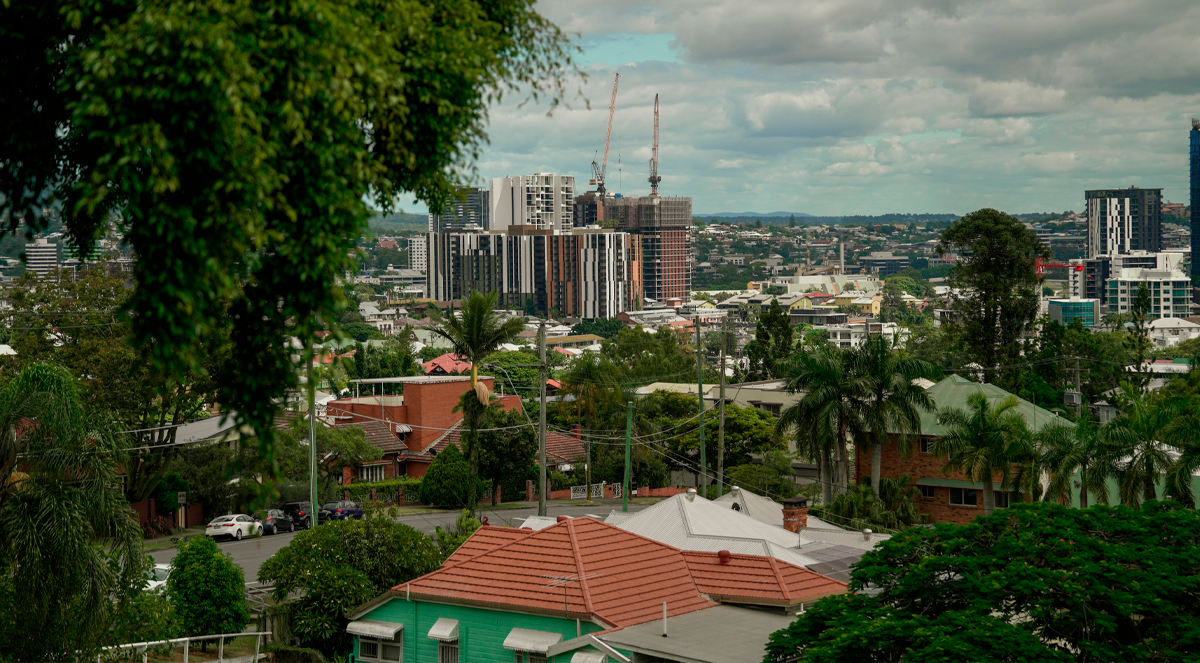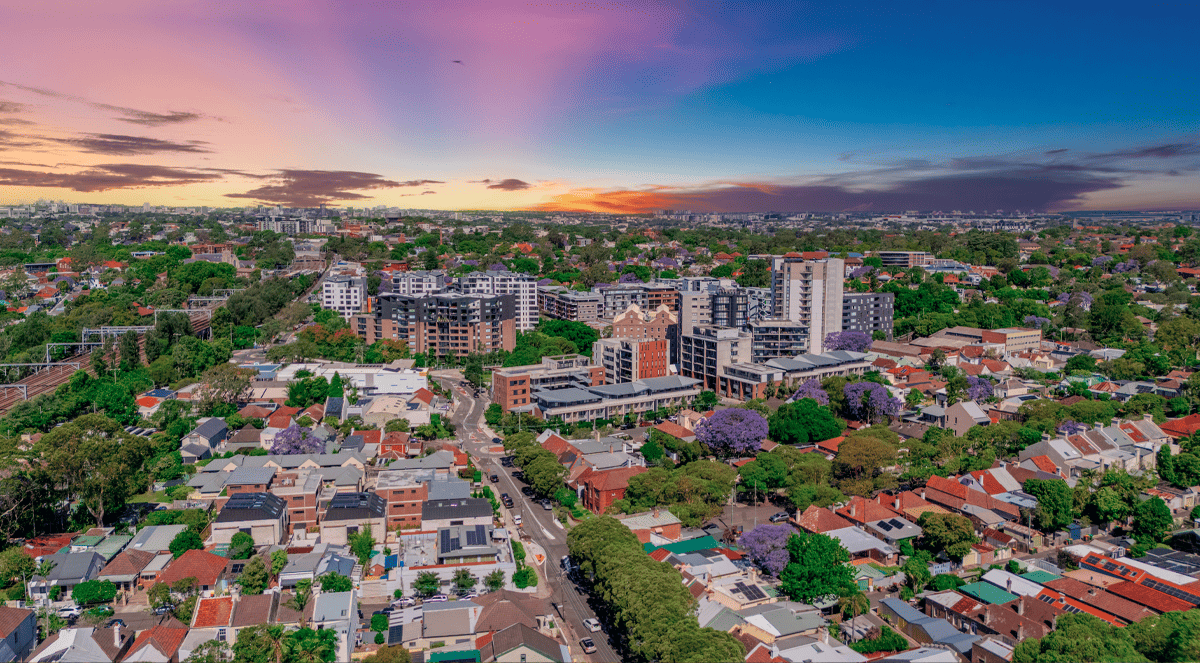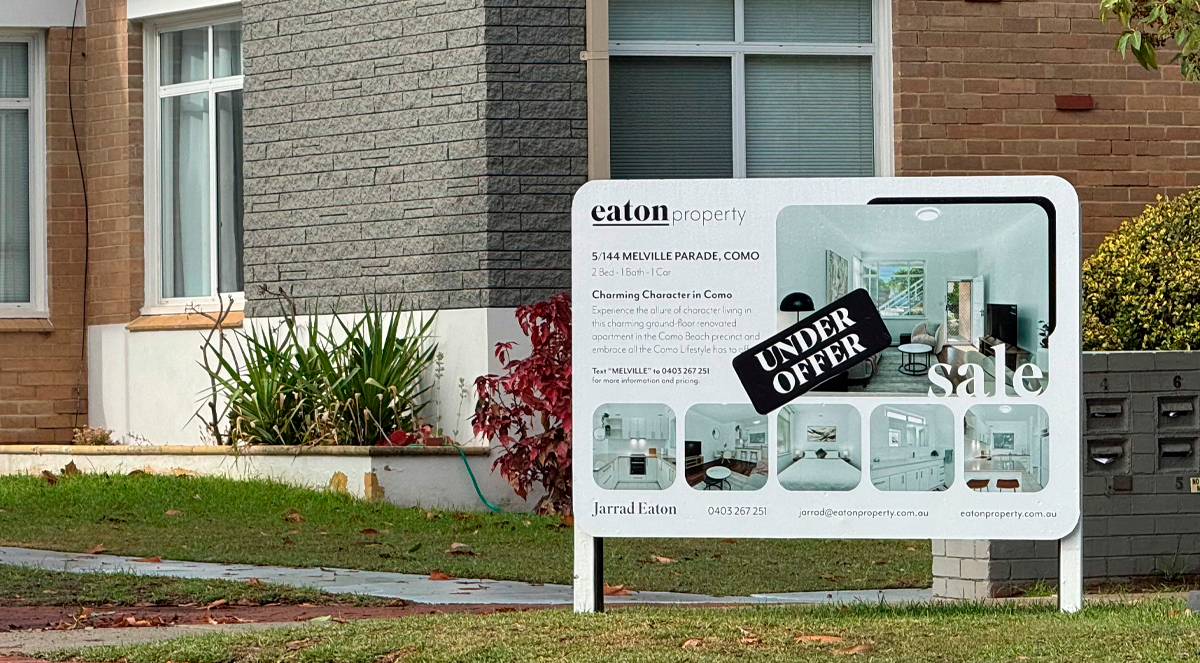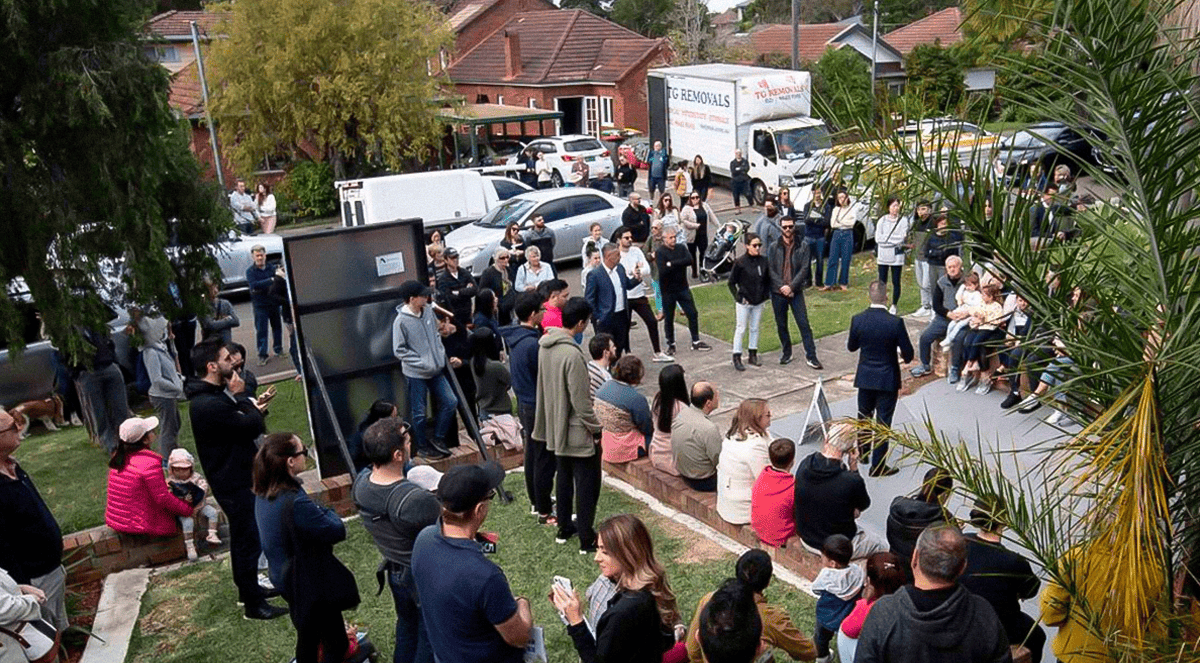Features > Property News & Insights > Market updates
Home values hold steady but slowdown “likely to be short-lived”

KEY POINTS
- CoreLogic says Australian home values held steady in January 2025, while PropTrack recorded a slight 0.08% national price decline during the month
- Both firms suggest that expected interest rate cuts and improving consumer sentiment could support home prices in 2025
- Increased listings, affordability constraints, and economic conditions have slowed price growth, but the downturn is expected to be short-lived
New data from CoreLogic says Australian home values held steady in January 2025, while rival PropTrack says its national home price index eased just 0.08% over the month.
However, the two property analytics firms have indicated that imminent rate cuts and improving consumer sentiment could see renewed support for home prices over the coming months, with PropTrack saying the current downturn in some markets is “likely to be short-lived”.
CoreLogic
CoreLogic says its national Home Value Index held steady in January 2025.
Although home values have eased 0.3% over the past three months, they remain 4.3% higher year-on-year.
The firm says January’s headline result was weighed down by the capital cities, where values fell 0.2%, while dwelling values across Australia’s regional areas rose 0.4% to reach a new record high.
CoreLogic’s figures show three of the eight capitals recorded a decline in home values over the month with Melbourne down 0.6% to a median home price of $772,317, Canberra down 0.5% to a median value of $850,534 and Sydney down 0.4% to a median of $1,193,228.
Brisbane (+0.3 to a median of $893,592) and Perth (+0.4, median price $809,870) continued to record growth in home values, but CoreLogic says there’s been “a clear and steady loss of momentum in these markets, especially in the detached housing sector where value growth has eased more noticeably.”
Adelaide (+0.7 to a new median of $819,363) continued its recent trend in CoreLogic figures of having the strongest growth among Australia’s capitals, while Hobart was steady in January.
CoreLogic’s latest numbers are notable for the relatively strong performance of regional housing markets compared to the capitals.
“Regional markets seem to be benefitting from a second wind of internal migration, along with an affordability advantage in some markets, and what looks to be some permanency in hybrid working arrangements across some occupations and industries,” CoreLogic’s Research Director, Tim Lawless, says.
Mr Lawless highlighted ABS figures from late last year on working arrangements, which revealed 36.3% of employed people usually worked from home, which was down from COVID-highs, but still above the 32.1% reported in 2019.
CoreLogic’s national Home Value Index is now down 0.3% from a record high recorded in October last year.
However, the data analytics firm says that, with imminent rate cuts from the Reserve Bank of Australia (financial markets say there’s a 90%+ chance the central bank will begin to cut rates for their current 13-year high of 4.35% in February), combined with improving consumer sentiment, “we could see some renewed support for housing prices over the coming months.
“Lower mortgage rates and a subsequent lift in borrowing capacity as well as an undersupply of newly built housing could be setting the foundations for a relatively shallow housing downturn,” Tim Lawless says.
However, he believes that “the likelihood of a significant growth cycle over the coming year remains low.”
PropTrack
REA Group’s PropTrack says its national Home Price Index eased 0.08% in January 2025, though it remains 3.82% higher year-on-year.
Like CoreLogic, it says capital city markets led the decline, falling 0.16% as regional areas recorded a 0.12% rise over the month.
Hobart (down 0.46% to a median of $670,000) led the decline, with Melbourne easing 0.30% to a median of $779,000 and Sydney down 0.21% to $1,101,000.
Prices also fell in Darwin (-0.11%), Canberra (-0.10%) and Adelaide (-0.07%), with Perth flat during the month.
Brisbane was the only capital to see prices increase in January, rising 0.08% to a median dwelling price of $871,000.
PropTrack says Perth (+15.38%), Adelaide (+12.41%) and Brisbane (+10.44%) remain the strongest performing capitals over the past year, although the company notes the pace of growth has slowed in recent months.
“While housing demand remained resilient to persistent affordability constraints, the pace of home price growth slowed throughout 2024, culminating in small falls over the past two months,” PropTrack Senior Economist Eleanor Creagh says.
“This softening in growth has occurred alongside a surge in stock for sale, giving buyers more choice and reducing the urgency to transact.
“Affordability challenges, weaker economic conditions and the sustained higher interest rate environment have also been contributors to slowing – and reversing – growth.”
However, Ms Creagh is upbeat about the year ahead.
“With interest rate cuts on the horizon, the price falls seen over the past two months are likely to be short-lived.
“As interest rates move lower this year, boosting borrowing capacities, improving affordability and buyer confidence are expected to drive renewed demand and price growth.”
Agreeing with CoreLogic’s Tim Lawless, Eleanor Creagh believes the large jump in home prices seen during the Covid property boom are unlikely to be repeated in the short term.
“The stretched starting point for affordability will likely dampen the uplift in prices compared to prior easing cycles, resulting in the pace of home price growth trailing the strong performance of recent years,” she says.
Stay Up to Date
with the Latest Australian Property News, Insights & Education.




.png?width=292&height=292&name=Copy%20Link%20(1).png)
 SIGN UP FOR FREE NEWSLETTER
SIGN UP FOR FREE NEWSLETTER





.jpg?width=1920&height=1080&name=Warning%2c%20You%20Might%20Be%20Facing%20Higher%20Taxes%20Soon%20(1).jpg)





.png?width=1920&height=1080&name=Rate%20Drops%20Signal%20BIGGEST%20Property%20Boom%20in%20DECADES%20(1).png)

.jpg?width=1920&height=1080&name=Labor%20vs%20Liberal%20These%20Housing%20Policies%20Could%20Change%20the%20Property%20Market%20Forever%20(1).jpg)
.jpg?width=1920&height=1080&name=QLD%20Slashes%20Stamp%20Duty%20Big%20News%20for%20Investors%20%26%20Home%20Buyers%20(1).jpg)
.jpg?width=1920&height=1080&name=Trump%20Just%20Slapped%20Tariffs%20%E2%80%93%20Here%E2%80%99s%20What%20It%20Means%20for%20Australia%20(1).jpg)
.jpg?width=1920&height=1080&name=Federal%20Budget%202025%20More%20Debt%2c%20No%20Housing%20%E2%80%93%20Here%E2%80%99s%20What%20You%20Need%20to%20Know%20(1).jpg)
.jpg?width=1920&height=1080&name=Australias%20Housing%20Crisis%20is%20about%20to%20get%20MUCH%20Worse%20(New%20Data%20Warns).jpg)
%20(1).jpg?width=1920&height=1080&name=Australias%20RENTAL%20CRISIS%20Hits%20ROCK%20BOTTOM!%20(2025%20Update)%20(1).jpg)
%20(1).png?width=1920&height=1080&name=Is%20Adelaide%20Still%20a%20Good%20Property%20Investment%20(2025%20UPDATE)%20(1).png)
.jpg?width=1920&height=1080&name=RBA%20Shocks%20with%20Rate%20Cuts!%20What%E2%80%99s%20Next%20for%20Property%20Investors%20(1).jpg)
%20(1).jpg?width=1920&height=1080&name=I%20Predict%20The%20Feb%20Rate%20Cut%20(My%20Price%20Growth%20Prediction)%20(1).jpg)
.png?width=1920&height=1080&name=Why%20Property%20Prices%20Will%20Rise%20in%202025%20Market%20Predictions%20(1).png)
.jpg?width=1920&height=1080&name=Why%20Investors%20Are%20Choosing%20Apartments%20Over%20Houses%202%20(1).jpg)
.jpg?width=1920&height=1080&name=Why%20Rate%20Cuts%20Will%20Trigger%20A%20Property%20Boom%20(1).jpg)
.jpg?width=1920&height=1080&name=Retire%20On%202Million%20With%20One%20Property%20(Using%20SMSF).jpg)
.jpg?width=1920&height=1080&name=4%20Reasons%20Why%20You%20Should%20Invest%20in%20Melbourne%20Now%20(1).jpg)
%20(1).jpg?width=1920&height=1080&name=Old%20Property%20vs%20New%20Property%20(Facts%20and%20Figures%20Revealed)%20(1).jpg)
%20(1).jpg?width=1920&height=1080&name=Will%20The%20New%20QLD%20Govt%20Create%20a%20Property%20Boom%20or%20Bust%20(My%20Prediction)%20(1).jpg)
%20Scott%20Kuru%20(1).jpg?width=1920&height=1080&name=Inflation%20Hits%20Three-Year%20Low%20(Will%20RBA%20Cut%20Rates%20Soon)%20Scott%20Kuru%20(1).jpg)
.jpg?width=1920&height=1080&name=How%20to%20Buy%20Investment%20Property%20Through%20SMSF_%20The%20Ultimate%20Guide%20(1).jpg)
.jpg?width=1920&height=1080&name=Victoria%20Slashes%20Stamp%20Duty%20Melbourne%20Set%20to%20Boom%20Scott%20Kuru%20(1).jpg)
.png?width=1571&height=861&name=Are%20Foreign%20Buyers%20Really%20Driving%20Up%20Australian%20Property%20Prices%20(1).png)
.jpg?width=1920&height=1080&name=The%20Single%20Factor%20That%20Predicts%20Property%20Growth%20Regions%20(1).jpg)
%20Scott%20Kuru%20(1).jpg?width=1920&height=1080&name=My%20Prediction%20On%20Rates%20%26%20Negative%20Gearing%20(Market%20Crash)%20Scott%20Kuru%20(1).jpg)

-1.png?width=1920&height=1080&name=Major%20Banks%20Cut%20Rates%20Will%20RBA%20Follow%20Suit%20(Sept%20Rate%20Update)-1.png)
%20Scott%20Kuru-1.png?width=1920&height=1080&name=Rate%20Cut%20Coming%20What%20New%20Zealands%20Move%20Means%20for%20Australia%20(Sept%20Prediction)%20Scott%20Kuru-1.png)
%20(1).jpg?width=1920&height=1080&name=Buy%20when%20the%20interest%20rates%20are%20high!%20(Why%20you%20must%20buy%20now!)%20(1).jpg)
.jpg?width=1920&height=1080&name=Carms_Revised%20Taxes%20Due%20Aug%209%20YT%20Thumbnail02%20(1).jpg)
.jpg?width=1920&height=1080&name=Carms_Too%20Little%20Too%20Late%20Aug%207%20YT%20Thumbnail01%20(1).jpg)









.jpg?width=1920&height=1080&name=Carms_Rate%20Drop%20In%20July%20Jun%2010%20YT%20Thumbnail02%20(1).jpg)
.jpg?width=1920&height=1080&name=Carms_Own%20a%20Property%20V6%20Jun%205_YT%20Thumbnail%20(1).jpg)









.png?width=1920&height=1080&name=Artboard%201%20(3).png)






.jpg?width=1920&height=1080&name=YT%20thumbnail%20%20(1).jpg)

